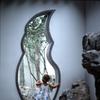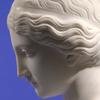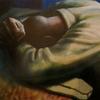Fashioning Kimono; Art Deco and Modernism in Japan
- BIRMINGHAM, Alabama
- /
- August 01, 2010
Fashioning Kimono chronicles the increasing importance of kimono, and demonstrates, through a wide-range of beautiful, one-of-a-kind examples and photographs, why kimono is an art form that resonates within the culture that created it, and far beyond.
The exhibition features nearly 100 kimono - worn by women, men and children - some hand-woven and simple, others elaborately embroidered. The kimono on display date from the late 19th and early 20th centuries and come to us from the Montgomery Collection of Lugano, Switzerland.
Besides the kimono present in the galleries, we will display 50 period photographs of women in kimono and fashion advertisements that document the way this important garment reflected the evolution of national thinking. The framed archival photos are from the Hokusai Research Centre in Milan, Italy.
Not only does Fashioning Kimono show the changing role of traditional kimono designs, but also the kimono worn by modern-minded, independent, urbanized, young Japanese women of the day. Many are enlivened by Art Deco patterns that heralded the emergence of Japan’s “new women,” who, for the first time, entered the work force and challenged the way women were viewed in Japanese society.
Well into the 1950s, the kimono was the daily dress of choice in Japan. A short time later, however, Western styles of clothing replaced the kimono, leaving the traditional garment to assume more formal usage. Fashioning Kimono presents the innovative results of the dramatic industrial and social change of this time.
Besides displaying a fascinating collection of kimono, Fashioning Kimono touches off a great selection of Japanese themed activities at the Museum for the coming months. Lectures, a festival of groundbreaking, classic Japanese films, a shibori-dyeing workshop, which will teach a time-honored method used to dye kimono, and kimono-related programs throughout the Museum – everywhere from Art On The Rocks to Oscar’s café – will make the Birmingham Museum of Art an epicenter of Japanese culture.
Founded in 1951, the Birmingham Museum of Art has one of the finest collections in the Southeast. More than 24,000 objects displayed and housed within the Museum represent a rich panorama of cultures, including Asian, European, American, African, Pre-Columbian, and Native American. Highlights include the Museum’s collection of Asian art, Vietnamese ceramics, the Kress collection of Renaissance and Baroque paintings, sculpture, and decorative arts from the late 13th century to the 1750s, and the Museum’s world-renowned collection of Wedgwood, the largest outside of England.




10270x400_c.jpg)

















